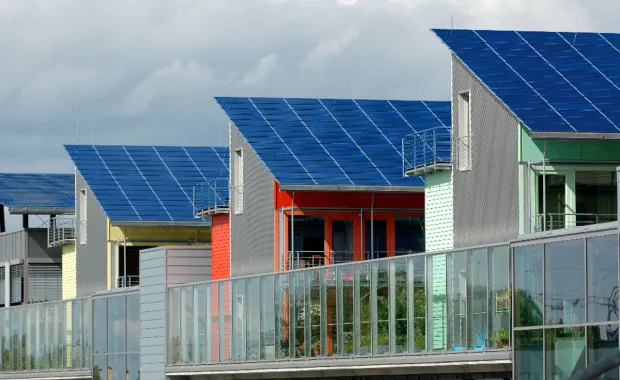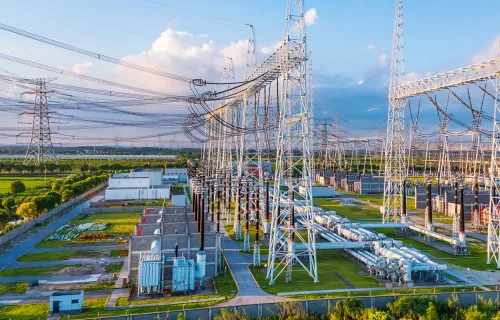The shift to net-zero is accelerating—and with it, the need for energy systems that are smarter, faster and more resilient. Across the Energy & Utilities sector, one concept is moving rapidly up the priority list: flexibility.
Whether it’s adjusting demand in real time, balancing local grids or responding to supply fluctuations, flexibility is emerging as a core enabler of decarbonization and a critical driver of value.
At CGI, our work with energy clients across Canada, the UK, Sweden, the Netherlands and beyond shows that flexibility has always been both a technical and business challenge—precisely because it is, first and foremost, a strategic opportunity.
Flexibility is climbing the C-suite agenda
Three out of four energy executives now rank flexibility as a top priority in their net-zero strategies. And it's easy to see why.
As grids take on more renewables, energy demand becomes less predictable—and traditional systems can’t keep up. Flexibility provides the agility to:
- Maintain grid stability during volatility
- Integrate variable renewable sources like wind and solar
- Optimize costs and reduce waste through smarter load balancing
From reducing emissions to unlocking new revenue streams for end users, the business case is growing stronger by the day.
A universal need—but not a one-size-fits-all solution
While flexibility is a global imperative, its implementation looks very different from one region to another.
- Germany is prioritizing sector coupling and grid digitization, focusing on integrating distributed renewables to achieve ambitious decarbonization targets, with plans to introduce a capacity mechanism by 2028.
- In Southern Europe, the rapid growth of photovoltaic capacity is both an opportunity and a challenge. Combined with energy storage, it enables management of demand and production peaks while enhancing grid resilience—leveraging the region’s abundant solar resources.
- The UK is advancing a hybrid approach that combines system-wide response with distributed energy resources at the edge.
- Sweden is leading in decentralization, using 15-minute dynamic billing and local flexibility markets to manage energy closer to the point of use.
- In the Netherlands, network congestion is driving urgent innovation around digital data hubs and community-based market models.
- Australia is advancing rapidly in decentralized energy, leveraging large-scale battery storage, virtual power plants (VPPs) and innovative market designs to support high penetration of solar and wind power.
- The United States is rapidly scaling energy storage solutions and vehicle-to-grid (V2G) technologies, leveraging federal incentives to enhance grid stability and accelerate renewable integration.
- And in Canada, flexibility still leans heavily on demand-side solutions—such as smart EV charging, utility-control of HVAC systems or thermal storage to manage peaks in electric heating demand and build cold-weather resilience.
These approaches reflect real-world challenges—like geography, regulatory maturity and existing infrastructure—that shape what “flexibility” looks like in practice.
Global trends are reshaping energy strategy
Behind the scenes, macro forces are accelerating the shift to flexible systems.
- Energy independence is top of mind, as geopolitical tensions put supply chains at risk and drive nations to invest in domestic renewables and grid innovation.
- The rise of prosumers—from energy cooperatives to individual households—is challenging legacy models, pushing energy systems to become more decentralized and dynamic.
- Investor behavior and policy are shifting too. Governments are offering new incentives for clean tech adoption, while capital increasingly flows to sustainable energy projects with built-in resilience.
One standout example: Ukraine’s recent energy reforms. Despite challenging conditions, the country has invested in decentralized renewables, battery storage and energy efficiency—demonstrating how flexibility can also be a lever for national resilience.
The technology is ready—and advancing rapidly
The tools for delivering energy flexibility are evolving quickly:
- Smart metering and IoT devices allow for more granular, real-time management of consumption.
- AI and analytics enable better forecasting, optimization and automation.
- Battery storage and vehicle-to-grid (V2X) systems are expanding what's possible in terms of demand response and backup capacity.
Digital twins, data hubs and DERMS platforms are enabling grid operators to manage complexity at scale—and make faster, more informed decisions.
Challenges remain—but so do the opportunities
No transformation is without its hurdles.
- Germany continues to balance its energy transition goals with the need to maintain economic competitiveness, placing critical focus on infrastructure upgrades and regulatory clarity.
- Southern Europe encounters challenges related to grid congestion and integration costs but sees major opportunities in regional interconnections and market reforms to unlock flexibility at scale.
- In the UK and Netherlands, market transparency and data governance are ongoing concerns. • In Sweden, new regulations and talent gaps are top priorities.
- Australia faces unique challenges from extreme weather events and geographic dispersion—and, unlike most regions, also contends with excess renewable energy. Yet, as an early adopter, Australia stands out as a global leader in developing and deploying flexible grid solutions and digital innovations.
- The United States faces complexities due to varied state-level regulations, though new federal initiatives are significantly boosting investment in flexible grid infrastructure.
- In Canada, regulatory fragmentation, deployment costs and the absence of a framework to value flexibility services remain major hurdles.
But many of these barriers are also inflection points for growth. The leaders who succeed will be those who invest in:
- Digital infrastructure to unlock the power of data
- Cross-sector partnerships that bring agility and scale
- Localized strategies that reflect regional realities, not just global trends
Flexibility in action: What’s next for energy leaders
For energy executives, flexibility is fast becoming a competitive differentiator. The leaders we work with are already using it to:
- Monetize demand-peak management and unlock new market mechanisms
- Improve forecasting and reduce operating costs
- Strengthen resilience in the face of disruption
- Deliver on ESG and net-zero commitments without compromising reliability
This is about more than managing volatility—it’s about turning uncertainty into opportunity.
The future is flexible
As the transition to clean energy accelerates, flexibility is becoming the foundation of a smarter, more resilient energy system. Whether you’re an operator, a policymaker or an industrial energy user, now is the time to act.
Because flexibility isn’t just about adapting to change—it’s about driving it.









